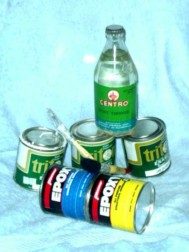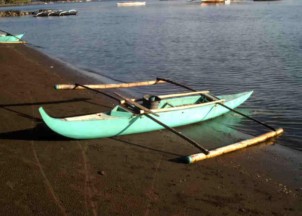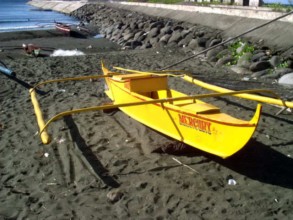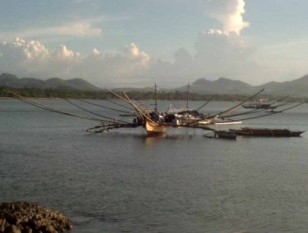Filipino Canoes |


The main area is here. This is what T-I is all about. Filipino Canoes! Paddle, power and sail |
I've always liked boats. Learned to sail on Clearlake in Galveston Texas in
the '70s. Andy Stowe, my first wife's brother, taught me on a Senior Dolphin
we rented there. I've owned a Hobie 14, Hobie 16, Oday 14 and rented
a lot of others over the years. Now I'm retired and living in the Philippines I have decided to take up boating again. I love the canoes here. They are simple, sturdy and functional. You won't find carbon fiber or kevlar in these boats. Copper nails and epoxy glue are as high tech as things get here The epoxy glue is two part. Mix equal amounts and apply within a half hour or so. Canoe it's self is either dugout with local wood used for the thwarts or 1/4 inch ply over frame. Some of the larger canoes have a dugout bottom with sides of ply over frame. Copper nails and epoxy hold everthing together and when the hull is complete a thin coating of the epoxy mix goes over everything before 2 or 3 coats of paint are applied. |
Crossbeams and floats are usually bamboo but occasionally the cross beams are galvenized
pipe. All of this is held together with 120 lb finshing line. Simply
called "nylon" here. Whatever size the boat is the construction is basically
the same. Whatever is simple and straight forward applies.
All material is local and for all their simplicity these boats hold up well and
do the job they are designed to do. Barotos are the smallest of the canoes and are paddled by hand. Some of them have a simple sail rig for downwind travel and the locals here seem to prefer a square spritrig about 2.5m square. |
The pump boats are a bit bigger and are usually ply over frame construction though
there are also quite a few dugout pumpboats. You don't see the locals using
sails with pump boats. I choose to be different and while my pumpboat
has a 16hp Brigs and Straton engine for primary locomotion and I am making a
100 sq ft crabclaw, leeboard and rudder for sailing. I will put details on
my boat in the pumpboat section of T-I. |
The Pakpakan are a larger canoe up to 50 feet long or more and they are set up with
large bamboo outriggers all round to hold the huge fishing nets that they use.
These boats usually catch large quantities of small fish which they bring
in early every morning and sell to the vendors in the market place. All
comercial fishing is done at night. The catch is best when there is no
moon. |
The biggest canoes are the Bancas often spelled Bangka These can be huge.
60 feet or more they dwarf the smaller canoes but the construction is basically
the same. These are used for fishing with dragnets or for ferry service.
I often thought it would be nice to live aboard one of these.
|
The size and function of these different Filipino canoes overlap a lot but the information
above is a good generalization. Use the links at the top of this
page for links to pictorial essays on the vaqrious canoe type. The
Pumpboat is the canoe I cover most and I will include a piece in the pumpboat
link about my boat and it's conversion to whatever it's eventual incarnation
will be. |




